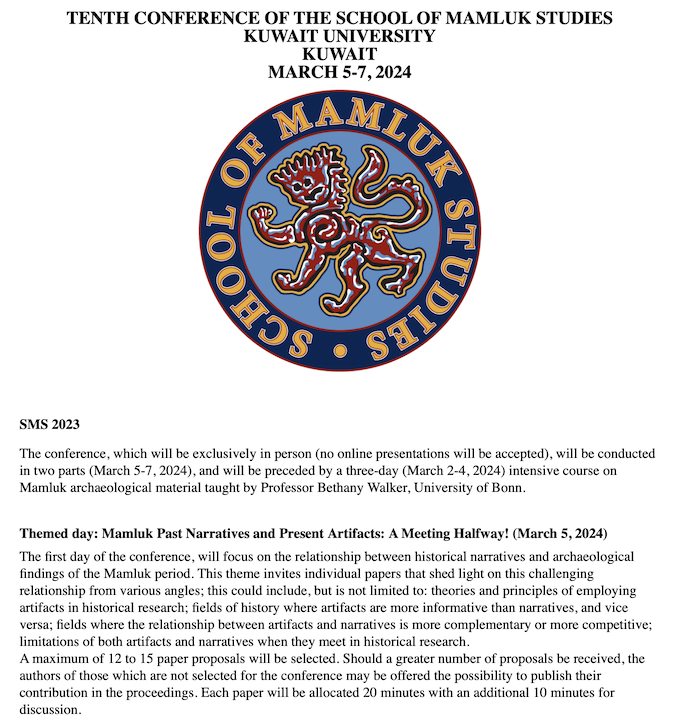
For details, click here.

For details, click here.
By Daniel Martin Varisco
[In 2003 I attended a conference in Rome and gave a paper which was eventually published in Convegno Storia e Cultura dello Yemen in età Islamica, con particolare riferimento al periodo Rasûlide (Roma 30-31 ottobre 2003 (Accademia Nazionale dei Lincei, Fondazione Leone Caetani, 27, pp. 161-174, 2006). As this publication is virtually inaccessible, I am reprinting the paper here (with page numbers to the original indicted in brackets).] The original post on Tabsir was here.
INTRODUCTION AND SOURCES
[p. 161] About seven and a half centuries ago the second Rasulid sultan, al-Malik al-Mu?affar Y?suf ibn ‘Umar, was thrust into power in his youth after his father’s murder, just about the time the Genoan Marco Polo was born. The overlap between the Italian merchant mercenary and mercenary descendant sultan is fraught with irony. Al-Mu?affar, the untested state builder came to power just a decade before the overthrow of the Abbasid caliphate, which had blessed Rasulid rule as a buffer against the Zaydi imams of Yemen’s northern highlands, while the future Italian diplomat set out on his trek only a decade or so after the Mongols had destroyed Baghdad. Polo was destined to serve an aging Kublai Khan, returning to Italy in 1295, the very year that the seventy-year-old-plus Rasulid ruler died. When Polo referred to the immense wealth of the sultan of Aden, “arising from the imposts he lays” in the Indian Ocean trade, he meant al-Mu?affar. Marco Polo and al-Malik al-Mu?affar never met, except in print, but the world that they both embraced was centered on an important trade network linking the Mediterranean and Africa with Persia, India and ultimately the lands of the great Khan.
Fortunately for the Rasulids, the merciless Mongol warriors never reached Yemen, apart from a few individuals who later assisted a Yemeni sultan in compiling a King’s Dictionary also known as the “Rasulid Hexaglot.” (1) [p. 162] Yemen also escaped the incursions of crusading medieval knights, although the legacy of Saladin played a major role in defining its political fortunes until the arrival of the Ottoman garrisons and Portuguese galleons in the sixteenth century. My focus is on the zenith of the Rasulid era near the end of the long reign of al-Mu?affar, the preeminent state-builder of the dynasty. By 1252 he consolidated his hold over the coastal zone (Tih?ma), southern highlands and Aden, as well as achieving periodic control over ?an?’, thus driving the Zaydi imams back to their firm base in ?a‘da. The sultan’s forces in the late 1270s took control, by land and by sea, of the important southern harbors at al-Shi?r and Dhofar, two important sailing venues along the trade route to the Persian Gulf and India. In 682/1283, despite the Zaydi loyalties of many of the tribes, al-Mu?affar was able to briefly take hold of ?a‘da, even striking coins there. Military success led to increased diplomatic recognition for the Rasulids; later delegations are described in the chronicles as arriving from Persia, Oman, India and China. Fortunately, al-Mu?affar was an avid patron of architecture and learning, so that the material and written records of Rasulid activities are quite extensive. (2)
My paper is on the state of Yemeni agriculture near the end of al-Mu?affar’s reign, when his son al-Malik al-Ashraf ‘Umar wrote a major agricultural treatise entitled Mil? al-mal??a and included a detailed agricultural almanac in his astronomical compendium, al-Tab?ira f? ‘ilm al-nuj?m. (3) Perhaps the most valuable resource for the history of Yemen’s internal production and external trade at the close of the 7th/13th century is a compilation made for the court archives of al-Mu?affar. This is probably best styled, in English, a register, a daftar which documents customs, taxes, duties, state finances and production data for the areas under Rasulid control, most notably the commerce through the port of Aden. In this sense, it is a Rasulid “Doomsday Book,” a record of mundane matters that provides a far better insight on the economics and administration of Yemen at the time than any of the surviving historical chronicles. Internal dates indicate most of the information is based on field reports from 1292-96. Yemeni historian Mu?ammad ‘Abd al-Ra??m J?zim has recently edited and annotated this [p. 163] important text for the Centre français d’Archaeologie et de Sciences Sociales de Sanaa.(4)
FOOTNOTES:
(1) This is a unique Rasulid hexaglot, compiled in the 1370s and published in P. GOLDEN 2000. The Mongol dialect entries are mostly from the Il-khânid era.
(2) A fuller account of the achievements of al-Mu?affar is provided in VARISCO 1993a, pp. 14-23.
(3) For a detailed analysis of al-Ashraf’s agricultural almanac, see VARISCO 1994. See also VARISCO 2002, pp. 323-351.
(4) J?ZIM 2003.
to be continued …
The references for the whole paper are indicated below:
REFERENCES
Al-Akwa‘, Mu?ammad
1971 al-Yaman al-kha?r?’ mahd al-?a??ra. Cairo: Ma?ba‘at al-Sa‘?da.
Gingrich, Andre and J. Heiss. 1986. Beiträge zur Ethnographie der Provinz Sa‘dah. (Nordjemen). Sitz. Akad. d. Wiss. Phil-hist. Kl, vol. 462, Vienna.
Golden, Peter
2000 The King’s Dictionary: The Ras?lid Hexaglot: Fourteenth Century Vocabularies in Arabic, Persian, Turkic, Greek, Armenian and Mongol. Leiden: Brill.
Ibn Ba????a
1980. Ri?lat Ibn Ba????a. Beirut: D?r Bayr?t li-al-?ib?‘a wa-al-Nashr.
Ibn al-Muj?wir, Jam?l al-D?n Y?suf (died 690/1291)
1954 ?ifat bil?d al-Yaman wa-Makka wa-ba‘? al-Hij?z al-musamm?t ta’r?kh al-mustab?ir. 2 vols. Edited by Oscar Löfgren. Leiden: Brill.
Ibn S?da, ?asan
1965 al-Mukha??a?. 17 volumes. Beirut.
Ibn Wa?shiyya
1993-95 Kit?b al-Fil??a al-Naba?iyya. Edited by T. Fahd. Damascus: Institut Français de Damas.
al-Khazraj?, Ab? al-?asan ‘Al? (died 812/1410)
1906-18 The Pearl Strings: A History of the Resuliyy Dynasty of Yemen. Edited by J. Redhouse. 5 volumes. London: Luzac and Company.
Varisco, Daniel Martin
1993a The Agricultural Marker Stars in Yemeni Folklore. Asian Folklore Studies 52:120-142.
1993b Texts and Pretexts: The Unity of the Rasulid State under al-Malik al-Mu?affar. Revue du Monde Musulman et de la Méditerranée 67 (1993):14-23.
1994 Medieval Agriculture and Islamic Science: The Almanac of a Yemeni Sultan. Seattle: University of Washington Press.
2002 Agriculture in Rasulid Zab?d. In J. F. Healey and V. Porter, editors, Studies on Arabia in Honour of Professor G. Rex Smith, 323-351. Oxford: Oxford University Press.
Practising Community in Urban and Rural Eurasia (1000–1600): Comparative and Interdisciplinary Perspectives, eds. Fabian Kümmeler, Judit Majorossy, and Eirik Hovden (Brill Publishing, November 2021)
https://brill.com/view/title/60086
This volume explores social practices of framing, building and enacting community in urban-rural relations across medieval Eurasia. Introducing fresh comparative perspectives on practices and visions of community, it offers a thorough source-based examination of medieval communal life in its sociocultural complexity and diversity in Central and Southeast Europe, South Arabia and Tibet. As multi-layered social phenomena, communities constantly formed, restructured and negotiated internal allegiances, while sharing a topographic living space and joint notions of belonging. The volume challenges disciplinary paradigms and proposes an interdisciplinary set of low-threshold categories and tools for cross-cultural comparison of urban and rural communities in the Global Middle Ages.
The articles relevant to Yemen include:
Balancing a Community’s Food and Water Supply: The Social Impact of Rural-Urban Interdependences in Kor?ula (Dalmatia) and ?a?da (Yemen) — Fabian Kümmeler and Johann Heiss
Conceptualizing City-Hinterland Relations and Governance: Medieval Sanaa as a Case Study — Eirik Hovden, Johann Heiss, and Odile Kommer
The Monuments of Rasulid Ta?izz: The Physical Construction of Power and Piety — Noha Sadek
Defining Rules of Rural-Urban Flows: Endowments, Authority and Law in Medieval Zaydi Yemen in a Comparative Perspective — Eirik Hovden
“To Extol Knowledge”: Celebrating the Completion of Books in Rasulid Yemen — Johann Heiss
Nodal Conglomerates and Their Visions: Comparative Reflections on Urban-Rural Settings across Asia and Europe (1000–1600 CE) — Andre Gingrich
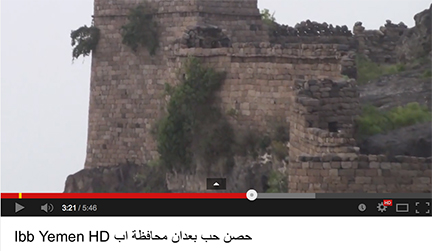
There is a wealth of video documentation of Yemen’s historical sites. One of these sites is the fortress of Habb in Ba‘dan, with a spectacular view of the surrounding area. For a video visit by Ali Dawud, click here.
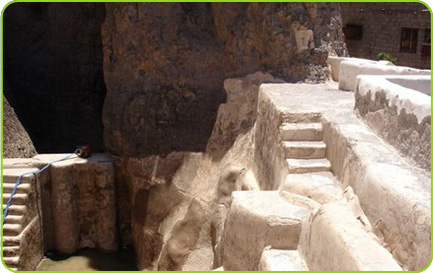
Øصن التعكر ÙÙŠ Ù…ØاÙظة إب .. من اشهر القلاع الØربيه ÙÙŠ التاريخ اليمني القديم
صØاÙØ© نت 26 نوÙمبر 2013
استطلاع / Ù…Øمد مزاØÙ… / جبل التعكر من أشهر الØصون والقلاع الØربية ÙÙŠ التاريخ اليمني القديم لا سيما ÙÙŠ عهد الدولة الصليØية.. عندما تÙكر بالذهاب إليه.. لمعرÙØ© تلك الأسرار التي تØدث عنها المؤرخون، Ùإن ذلك يتطلب منك المرور على مدينة جبلة التي تقع شمال شرق التعكر، والتي ارتبط اسمها باسم الملكة أروى بنت Ø£Øمد الصليØÙŠ وقد جعلت من جبلة العاصمة السياسية لدولتها ومن جبل التعكر منتجعاً سياØياً لها خاصة ÙÙŠ موسم الأمطار والإخضرار..
عندما تصل إلى Øصن أو جبل التعكر “كما ÙŠØب تسميته المؤرخون†Ùأنك لن تنسى Ùيما بعد هذا المكان ÙالØصن لا تجد شبراً من الأرض التي Øوله إلا يسيطر عليها الإخضرار..
إضاÙØ© إلى أن موقع الØصن الذي يرتÙع Øوالي “3000†متر Ùوق Ø³Ø·Ø Ø§Ù„Ø¨Øر يجعلك ØªØ³Ø¨Ø ÙÙŠ ملكوت الله Øيث تستطيع وأنت ÙÙŠ قمته أن تمد نظرك إلى أبعد ما يمكن أن يتصوره المرء Øيث يطل الجبل من الناØية الجنوبية الغربية على مدينة ذي السÙال وأجزاء من السياني ومن ناØية الشمال يمكن مشاهدة مدينة جبلة والوقش وسائلة جبلة ومÙرق جبلة أما من الجهة الجنوبية الشرقية Ùيمكن مشاهدة مدينة السياني وعندما تطل من أعالي جبل “التعكر†Ùأنك Øينها ستشعر وكأنك طائر يطير بجناØيه ÙÙŠ السماء، وتزيد لديك Ø£Øاسيس الÙØ±Ø ÙˆØ§Ù„Ø³Ø¹Ø§Ø¯Ø© عندما تنقل نظرك من جهة إلى أخرى لتشاهد الÙضاء الواسع الأÙÙ‚ الرØب، والمناطق الجميلة دائمة الاخضرار والتي يتجه المزارعون لزراعتها ورعايتها ومن ثم Øصادها.
وأنت ÙÙŠ أعلى قمة جبل التعكر وتØديداً ÙÙŠ وسط الØصن المتهالك Øالياً Ùإنك سترى جبل صبر الذي يأتي إليك بكل ما اØتوى من عظمة وجمال وتعرجات ليقول لك ها أنا المناÙس الØتمي لجبل التعكر، Ùتدرك عندها أنك بين عظيمين ولا مقارنة بينهما.
Continue reading Øصن التعكر ÙÙŠ Ù…ØاÙظة إب
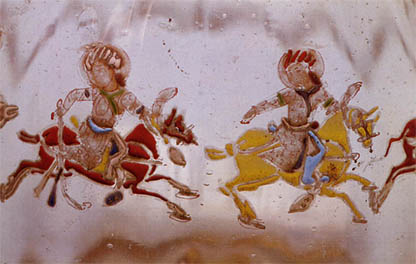
Rasulid polo players, ca. 1260-1270; Museum für Islamische Kunst, Berlin
This week I am participating in a conference in Vienna and will deliver a paper on Rasulid bureaucracy. Details on the conference are noted below. Anyone in or near Vienna is welcome to attend.
In addressing the theme of ‘Land and Power’ we wish to examine the power base of office-holding élites in pre-modern societies. As a tool of analysis we frame our questions in Weberian terms, distinguishing between exercise of power in a bureaucratic mode (ex officio) and power based on economic wealth and privilege in a patrimonial setting, with office being conferred as a consequence. Our focus will be on the interplay between economic power and bureaucratic rationality. In most pre-industrial societies, power and wealth was based on landownership and the control of food production: landownership as the basis of power of an office-holding élite is a recurring phenomenon in ancient states. We also seek to question whether such élites (especially in the periphery) were a force for cohesion or disruption from the point of view of the state, and to investigate the means by which the state sought to integrate and control office-holding élites, e.g. by the use of parallel and/or overlapping chains of command, or by co-optation through court offices and privileges.
Programme (provisional)
Wednesday, 20 February 2013
9–9.30 a.m. Welcome address by Jursa, Michael and Palme, Bernhard (Vienna)
Section 1: Elite Formation
Chair: Jursa, Michael
9.30–10 a.m. Garfinkle, Steven J. (Washington): Landownership and Office-Holding: Pathways to Privilege and Authority under the Third Dynasty of Ur
10–10.30 a.m. Kaiser, Anna (Vienna): Flavius Athanasius, dux et Augustalis Thebaidis
10.30–11 a.m. coffee break
11–11.30 a.m. Scheuble-Reiter, Sandra (Chemnitz): Military Service and the Allotment of Land in Ptolemaic Egypt
11.30–12 a.m. Paulus, Susanne (Münster): The System of Landownership in the Middle Babylonian Time (1500–1000 BC) Continue reading Vienna Conference
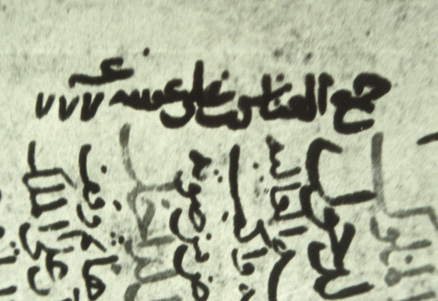
signature of the Rasulid king al-Malik al-Afdal
I have recently published a biographical portrait of a Rasulid king who ruled Yemen in the mid 14th century. This is al-Malik al-Afdal al-‘Abbas, who penned a few manuscripts, including a major treatise on agriculture. To read this biography, go to filaha.org.
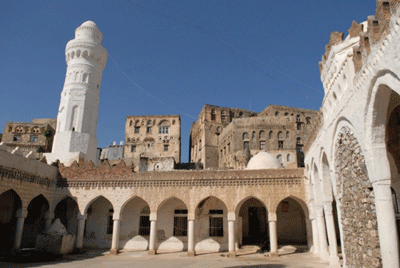
Mosque in Jiblah, Yemen
There was a time when books were hard to come by. Either they cost too much or were inaccessible in a private or exclusive university library. Whatever else the world wide web has done (and that is a mouthful), it now functions as an archive. More and more, the rare and out-of-print books I used to be forced to read in a library reading room are becoming available online. Mr. Gutenberg might roll over in his Grab at the very thought of a pdf file, but print has taken a new and universal turn. I especially enjoy the “flipbook”, which simulates turning the pages of images of the original. For an enjoyable read on the early history of Yemen, there is the flipbook version of Henry Cassels Kay’s translation called YAMAN, ITS EARLY MEDIAEVAL HISTORY, published in London in 1892. This has excerpts (not always trustworthy in their translation) from Umarah ibn Ali al-Hakami (1120/21-1174), Ibn Khaldun (1332-1406); Muhammad ibn Yaqub al-Janadi (d. 1332?).
The sad thing is that well over a century ago, Kay lamented that there was virtually nothing available on the history of Yemen, which had become of strategic interest to the British empire. Continue reading Tabsir Redux: Flipping through Yemen a Millennium Ago